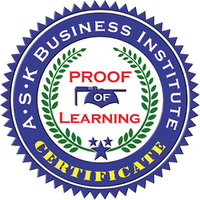In addition to differences in the content focus, each exam will differ slightly in terms of the levels of questions being asked. Using Bloom’s taxonomy as the model, questions are being selected to represent all six levels as indicated below:
Knowledge and Comprehension, including definitions, basic information, meaning of basic terms and concepts, and transfer of knowledge into new or different context.
Examples:
1. Which major marketing function communicates information to consumers about a business's products?
a. Promotion
b. Channel management
c. Product/Service Management
d. Pricing
2. If a company uses puffery to promote its products, it makes __________ claims.
a. exaggerated
b. fraudulent
c. humble
d. factual
Application and Analysis, including use of information and concepts in hypothetical situations and recognition of meaning as used in various settings and situations.
Examples:
1. A tornado destroyed a local business. This is an example of a(n)__________ risk.
a. pure
b. uninsurable
c. speculative
d. predictable
2. Calculate the total amount of the sale, using a sales-tax rate of 6%:
2 shirts @ $14.95 each
1 pair of jeans @ $39.99 each
1 sweater @ $21.55 each
a. $91.44
b. $95.94
c. $91.34
d. $96.93
Synthesis and Evaluation, including development of conclusions, ideas and recommendations for action based on hypothetical situations and data.
Examples:
1. Joelle and Darius are planning to open a business. Darius is unable to devote full time to daily business operations but plans to provide financial support. Which form of business partnership would you suggest to Darius?
a. Open
b. Closed
c. General
d. Limited
2. While at work, employees see that a customer has been in an accident. The customer appears to be unconscious. What should they do?
a. Take careful notes
b. Start CPR
c. Call 911
d. Move victim to a more comfortable position
